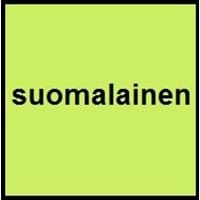Finnish vs Japanese
Countries
European Union, Finland
Japan
National Language
Estonia, Finland, Norway, Russia, Sweden
Japan
Second Language
Estonia
Not spoken in any of the countries
Speaking Continents
Asia, Europe
Asia, Pacific
Minority Language
Republic of Karelia, Russian Federation, Sweden
Palau
Regulated By
Institute for the Languages of Finland
Agency for Cultural Affairs (文化庁) at the Ministry of Education
Interesting Facts
- Finnish language has adopted many words from Iranian, Turkic, Baltic, Germanic and Slavic languages.
- In Finnish language, there are no articles or grammatical gender.
- In Japanese Language, there are 4 different ways to address people: kun, chan, san and sama.
- There are many words in Japanese language which end with vowel letter, which determines the structure and rhythm of Japanese.
Similar To
Estonian and Livonian Languages
Korean Language
Derived From
Not Available
Not Available
Alphabets in
Finnish-Alphabets.jpg#200
Japanese-Alphabets.jpg#200
Writing Direction
Left-To-Right, Horizontal
Left-To-Right, Horizontal, Top-To-Bottom
Hello
Moi
こんにちは (Kon'nichiwa)
Thank You
Kiitos
ありがとう (Arigatō)
How Are You?
Mitä kuuluu?
お元気ですか (O genki desu ka?)
Good Night
hyvää yötä
おやすみなさい (Oyasuminasai)
Good Evening
Hyvää iltaa
こんばんは (Konbanwa)
Good Afternoon
Hyvää iltapäivää
こんにちは (Konnichiwa!)
Good Morning
Hyvää huomenta
おはよう (Ohayō)
Please
haluta
お願いします (Onegaishimasu)
Sorry
Anteeksi
ごめんなさい (Gomen'nasai)
Bye
Heippa
さようなら (Sayōnara)
I Love You
Minä rakastan sinua
愛しています (Aishiteimasu)
Excuse Me
Anteeksi
すみません (Sumimasen)
Dialect 1
Colloquial Finnish
Sanuki
Where They Speak
Finland
Kagawa
How Many People Speak
Not Available
Where They Speak
Finland, Rauma
Fukuoka
Dialect 3
Meänkieli
Kansai
Where They Speak
Finland, Sweden
kansai
How Many People Speak
Not Available
Speaking Population
Not Available
Second Language Speakers
Not Available
Native Name
suomi / suomen kieli
日本語
Alternative Names
Suomi
Not Available
French Name
finnois
japonais
German Name
Finnisch
Japanisch
Pronunciation
[ˈsuomi]
/nihoɴɡo/: [nihõŋɡo], [nihõŋŋo]
Ethnicity
ethnic Finns
Japanese (Yamato)
Language Family
Uralic Family
Japonic Family
Subgroup
Finno-Ugric
Not Available
Branch
Finnic
Not Available
Early Forms
Proto-Finnic language
Old Japanese, Early Middle Japanese, Late Middle Japanese and Early Modern Japanese
Standard Forms
standard Finnish
Japanese
Language Position
Not Available
Signed Forms
Signed Finnish
Signed Japanese
Scope
Individual
Individual
ISO 639 6
Not Available
Not Available
Glottocode
finn1318
nucl1643
Linguasphere
No data available
45-CAA-a
Language Type
Living
Living
Language Linguistic Typology
Subject-Verb-Object
Subject-Object-Verb
Language Morphological Typology
Agglutinative, Synthetic
Agglutinative, Synthetic
Finnish and Japanese Language History
Comparison of Finnish vs Japanese language history gives us differences between origin of Finnish and Japanese language. History of Finnish language states that this language originated in 1543 whereas history of Japanese language states that this language originated in 1185. Family of the language also forms a part of history of that language. More on language families of these languages can be found out on Finnish and Japanese Language History.
Finnish and Japanese Greetings
People around the world use different languages to interact with each other. Even if we cannot communicate fluently in any language, it will always be beneficial to know about some of the common greetings or phrases from that language. This is where Finnish and Japanese greetings helps you to understand basic phrases in Finnish and Japanese language. Finnish word for "Hello" is Moi or Japanese word for "Thank You" is ありがとう (Arigatō). Find more of such common Finnish Greetings and Japanese Greetings. These greetings will help you to be more confident when conversing with natives that speak these languages.
Finnish vs Japanese Difficulty
The Finnish vs Japanese difficulty level basically depends on the number of Finnish Alphabets and Japanese Alphabets. Also the number of vowels and consonants in the language plays an important role in deciding the difficulty level of that language. The important points to be considered when we compare Finnish and Japanese are the origin, speaking countries, language family, different greetings, speaking population of these languages. Want to know in Finnish and Japanese, which language is harder to learn? Time required to learn Finnish is 44 weeks while to learn Japanese time required is 88 weeks.





